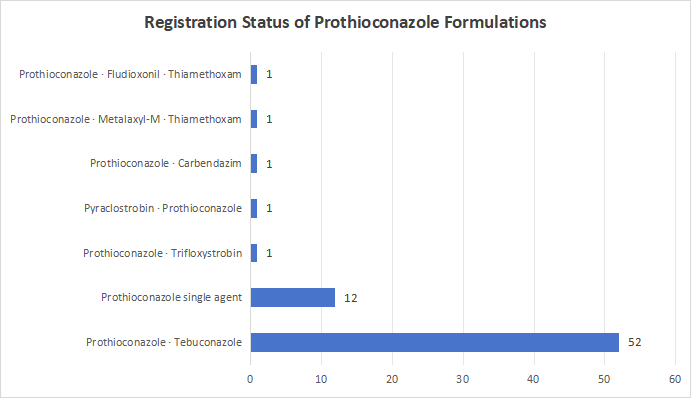Prothioconazole Market Landscape Reshaped: New Combination Products Break with Tradition, Ushering in an Era of Diversification
China's agrochemical market has recently witnessed a pivotal product evolution. Three new combination products for the major fungicide prothioconazole have been officially approved for registration. All three combine prothioconazole with QoI (Quinone outside Inhibitor) fungicides—namely trifloxystrobin, azoxystrobin, and pyraclostrobin—and are all designated for the control of Fusarium head blight (FHB) in wheat. This development not only significantly enriches the prothioconazole product portfolio but also signals a fundamental break from its long-standing, relatively monolithic combination model.
The specific product registration information is as follows:

Moving Beyond 'Fixed Partners' to Embrace New Synergistic Opportunities
With the increasing maturity of domestic production technology, the market application of prothioconazole has become quite widespread, with the total number of registered products exceeding 115. However, among these products, the choice of partners for its mixture formulations has long been remarkably consistent. In the past, out of a total of 60 combination products, a staggering 52 were paired with the same triazole fungicide, creating a highly homogenized market.

These three newly approved combination solutions, by introducing QoI ingredients with different modes of action, create a multi-target synergy with prothioconazole. This "powerhouse combination" not only effectively broadens the fungicidal spectrum but, more importantly, significantly reduces the risk of resistance developing from a single site of action, providing a more scientific and sustainable solution for crop protection.
Leading Enterprises Strategize with Foresight, Building Integrated Control Systems
In the highly competitive prothioconazole sector, although nearly 100 companies have entered the market, the real market advantage and product resources are highly concentrated in the hands of a few top-tier companies. Most participants hold only a single registration certificate, while companies with two or more are few and far between.
Among them, Hailir Group's strategic positioning is particularly noteworthy, leading the market with its foresight and comprehensive approach. The group currently holds 11 pesticide registration certificates related to prothioconazole, establishing a complete product chain from technical grade material (covering 95% and 98% purity) to various single-agent and combination formulations. Notably, the registration holders for two of the new combination products are its subsidiaries, Qingdao Keyuanxiang Chemical and Jiangxi Haikuolisi.

On its combination product line, Hailir already had established mixtures of prothioconazole with carbendazim and tebuconazole. Now, with the addition of the new combinations with trifloxystrobin and azoxystrobin, Hailir has successfully assembled four core combination technologies. Combined with its special combination products for seed treatment, the company has formed an "all-around control matrix" capable of comprehensively managing major diseases like Fusarium head blight and root rot, as well as pests such as aphids and thrips, further solidifying its market leadership and technical depth.
In terms of the registration of mixed formulations, Jiuyi Co., Ltd. has registered 2 products that are mixtures of prothioconazole and tebuconazole.

Meanwhile, other leading companies in the industry are also seeking breakthroughs through different paths. Some are innovating in formulation technology, having successfully registered a unique Oil Dispersion (OD) product, the only one of its kind on the market, and are expanding its registered use to cover diseases in various core crops such as wheat, peanuts, and rapeseed. Furthermore, expanding into the global market has become a growing trend. Some companies hold registration certificates explicitly marked for "export only," with products sold to countries and regions including Europe and North America, demonstrating the growing international competitiveness of Chinese agrochemical enterprises.



